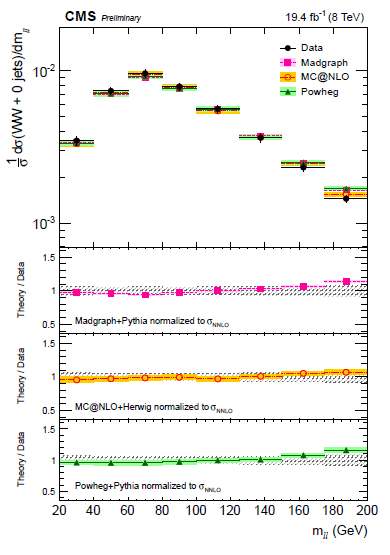The other day CMS put the word "end on an issue started one year ago, when ATLAS and CMS measured cross sections for WW production that seemed suspiciously high with respect to electroweak predictions. Was there an extra source of W boson pairs contributing to the observation ? A set of theoretical papers appeared on the arxiv, discussing the excess and how it could fit in this or that model. Eventually, the excitement was partly dampened by observing that an experimental selection cut used to extract the signal caused significant uncertainties in the theoretical calculations. It was the so-called "jet veto" that one routinely applies to enhance electroweak production processes with respect to strong-production backgrounds (especially top production).
The above is just a quick-and-dirty summary. If you want the gory details, you can get them from one-year-old posts in this blog, e.g.:
"New LHC diboson excesses point to light SUSY" (July 4th 2014)
"The SUSY-Inspiring LHC WW Excess May Be Due To Theoretical Errors" (July 18th 2014)
"More on the Alleged WW Excess from the LHC" (July 28th 2014)
Today, I prefer to stick to presenting the latest CMS measurement of WW production, which is detailed in this arxiv posting, and which finds a production rate in perfect match with standard model predictions. The nice thing of the new measurement, besides the excellent precision and the agreement with theory, is the extraction of differential distributions of WW production. This can be seen in the following graph, e.g., where the differential cross section as a function of dilepton invariant mass is shown and compared with different theoretical models (in the lower "ratio" graphs).

It is quite beautiful to see how precisely we have understood the production of W boson pairs at the LHC, and to observe these large data samples of what was once a rare process. WW production was first observed by the CDF experiment in the late nineties, and was then studied in detail by LEP2. A background to Higgs boson searches, it has remained since then one of the most interesting "clean" production processes to study at the LHC. Whether new physics will appear in this final state is still to be seen - but if you know me, I don't need to tell you where I'd put my money...




Comments